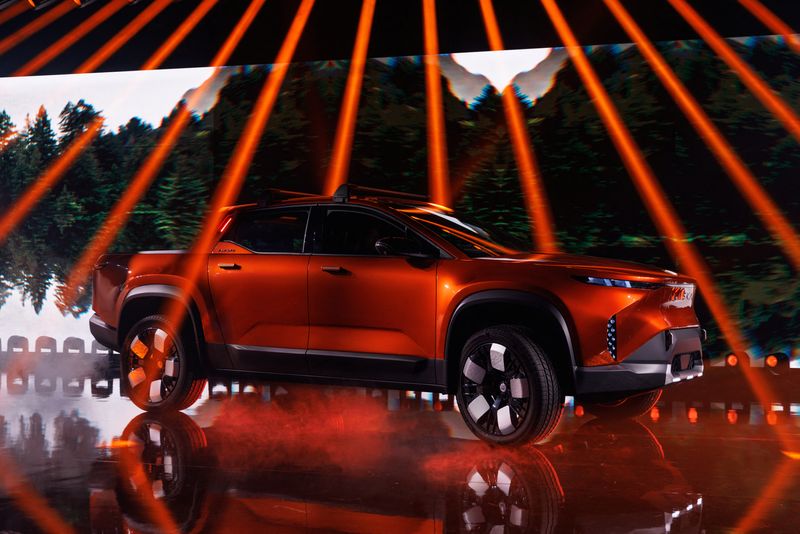Fisker unveils electric pickup truck even as supply chain bottleneck lingers
2023.08.03 20:47

© Reuters. Electric car company Fisker shows off its Alaska pickup truck in Huntington Beach, California, August 3, 2023. REUTERS/Mike Blake
By Lisa Baertlein and Abhirup Roy
HUNTINGTON BEACH, California (Reuters) – Electric vehicle (EV) maker Fisker Inc unveiled a pickup truck on Thursday, weeks after starting deliveries of its flagship sport utility vehicle (SUV) and as it tackles persistent supply chain issues.
Fisker aims to make a mark in the crowded EV market with lower-priced vehicles that still have high-design sensibility.
Slated to start production early 2025, the Alaska will join a fast-heating electric pickup market with players such as Ford’s F-150 Lightning, Tesla (NASDAQ:)’s Cybertruck and Rivian’s R1T set to jostle for dominance.
At just over $45,000, the Alaska will be priced lower than most rivals, Chief Executive Henrik Fisker told Reuters on the sidelines of the launch event in Huntington Beach, California.
While the R1T starts at $73,000, Ford cut the price of F-150 Lightning to just under $50,000.
Fisker said Alaska, reservations for which opened on Thursday, would be built on the same platform as its Ocean SUV. It will have a range of about 230-340 miles.
The Alaska is lighter and smaller than its rivals with a 4.5 feet (1.37 m) bed that can extend into the cabin to about 7.5 feet. “Our truck is the sportiest truck you are going to see,” he said.
Fisker’s announcement comes at a time when the broader EV market has been hit by a price war sparked by market leader Tesla to boost demand as rising interest rates have soured consumer demand.
Fisker, which uses contract manufacturing for its vehicles, aims to keep cost of production as well as vehicle prices low.
While the Ocean SUV starts at $37,499, its smaller Pear SUV, which was also unveiled on Thursday, is priced at $29,990.
But Fisker, like many of its EV peers, has been grappling with supply chain disruption that has hampered production of Ocean with the company missing its target in the quarter ended June.
Fisker said while a major shortage was resolved some suppliers are still having issues getting parts from their sub-suppliers.
“We’re still in a hangover of COVID,” he said, adding that some bottlenecks might continue for the rest of the year.








